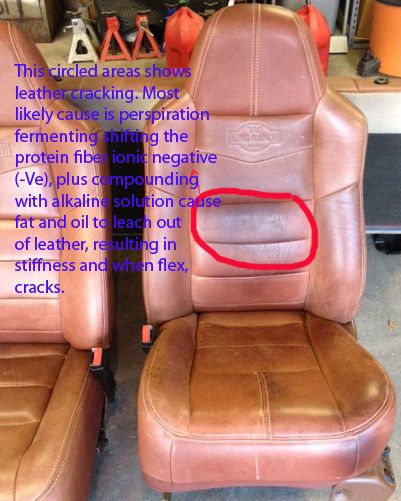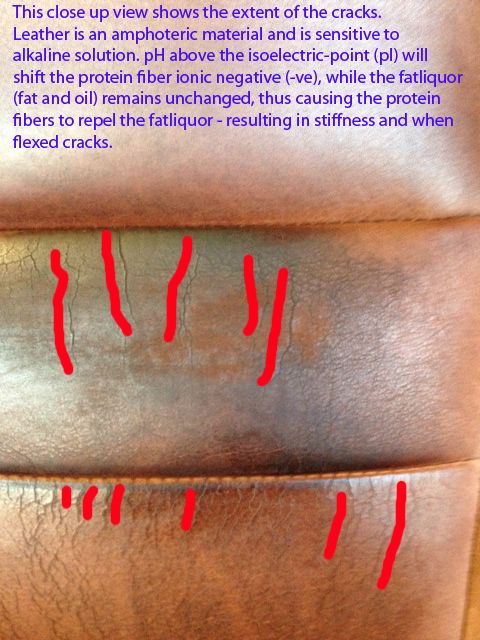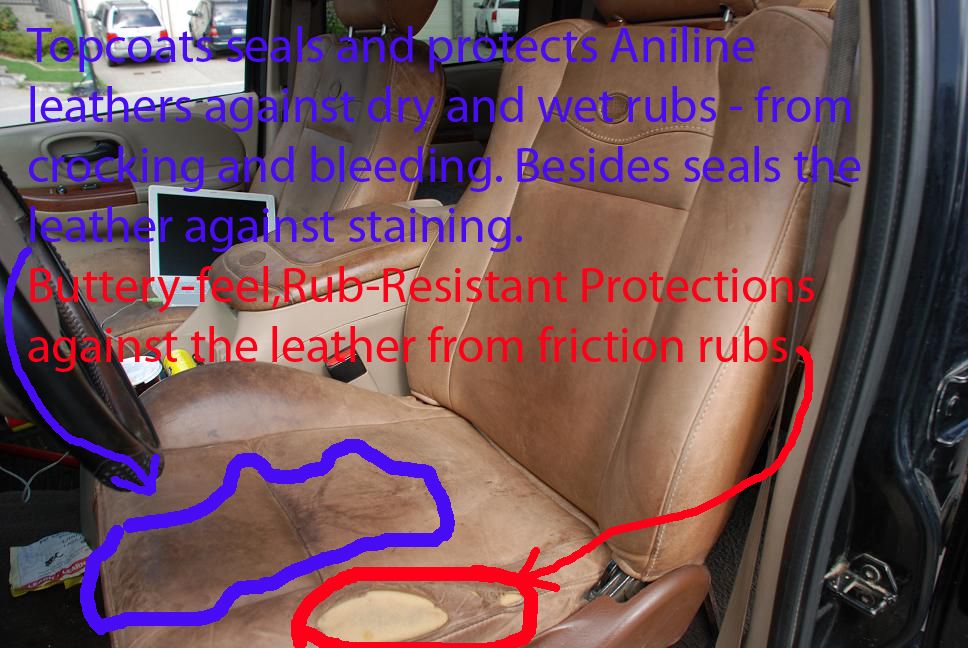LeMarque said:
Spoke with the fellow @ Leather Masters yesterday and I was told their 'Leather Master Protection Cream' and if I dilute their Strong Leather Cleaner, I 'd be good to go to clean and condition the seating on an F350 that's got King Ranch Leather.
Yes/No, maybe so?
TIA -
Lance
Ford King Ranch leather, you see in this picture is aniline dyed, instead of the normal pigment coated leathers in other vehicles.
It is absorbent to a degree and when the clear topcoat wears off, the leather is more susceptible to liquid penetration including sweat.
What you see in these two pictures are leather creaking, most likely primary cause is sweat, secondary cause may be due to alkaline cleaning solution that compound the stiffening of the leather that when flex leads to cracks.
Remember that leather is an amphoteric material; the bulk of the protein fiber is, while the leather constituents like the tanning agents and the fatliquor are not.
When sweat or perspiration ferments, it starts to shift alkaline and so does affect the protein fiber from losing its ionic positive charge. Fat and oil that are hydrogen bonds with the protein fibers, slowly breaks its bonds and starts to leach out of the protein fiber resulting in stiffness that when flex leads to cracks.
This breaking of hydrogen bonds between the protein fiber and the fatliquors accentuated when “alkaline” cleaning solution is used to clean the sweat stains. In most cases after drying the leather is stiffer than before it was clean, this is a case where the alkaline solution boost up the pH higher, thus compounding the problem of the breaking of the hydrogen bond between the protein fiber and the fatliquor.
The reverse of the pH phenomenon is also true, by using an acidic solution below the average pH of 4 to charge the protein fiber and increase it positive (+ve) charge.
Sweat need to be neutralized with an acidic rinse around pH from 2 to 3.
These pictures show you the importance to used “leather-safe” system, before cracks sets in.
Preventive maintenance includes periodic replenishing of the fat and oil lost through evaporation and through leaching out from breaking of hydrogen bond between the amphoteric protein fibers and the fatliquor.
In situation, you see in these pictures, an acidic hydrator below the pI of leather is essential to relax and separates the stick together fiber.
When the leather structure is totally relax acidic fatliquor is replenished, so that when they are dry, softness and suppleness of the leather is return with tear- strength.
#1 Leather Cracking – possible primary cause is “Sweat”, secondary cause may be compounded with “Alkaline” solution.
#1 Close-up view of “Cracks”
Roger Koh
info@leatherdoctor.com


